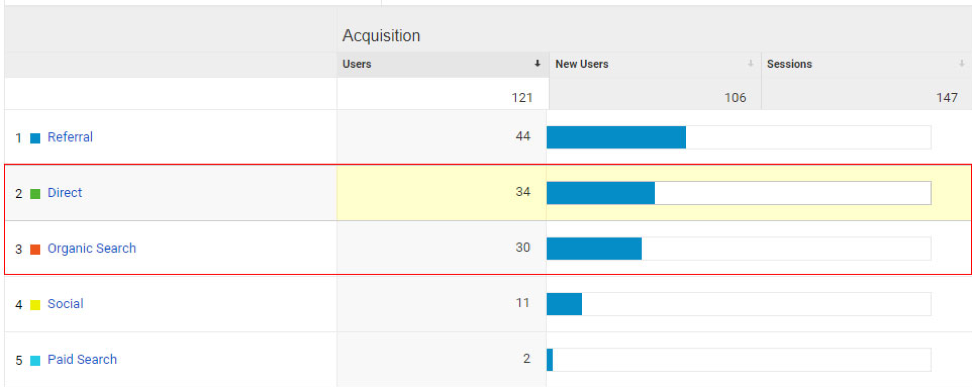

Updated December 5, 2024
You can measure your brand’s performance by looking at metrics such as awareness, familiarity, consideration, and advocacy. Learn how to measure the performance of your brand and create a stronger brand strategy.
Updated March 5, 2022
Having a great brand is important for any business to be successful – it’s that all-important first impression that lasts in people's minds and helps them trust the business. However, a lot of businesses forget this and are quick to spend money elsewhere.
Looking for a Public Relations agency?
Compare our list of top Public Relations companies near you
The reason for this is that they don’t know how to measure their brand performance.
What is brand performance?
Brand performance is the process of measuring the outcomes from branding efforts. By tracking key performance indicators such as impressions, traffic, and engagement, and comparing them against their brand performance goals, companies can determine the strengths and weaknesses of their brand.
It’s easy to measure the performance of a marketing campaign or salesperson; you have metrics and reports that show you exactly what is happening and when. But when it comes to a brand, how do you tell if it is good or not?
This blog will show you how to measure the performance of your brand and the key metrics you should look for when it comes to a quality brand.
We’ve broken down brand performance into four key metrics: awareness, familiarity, consideration, and advocacy and outlined how you can measure them.
Looking for a branding partner? Check out our directory of top branding agencies.
The first metric you should look at to decipher your brand’s performance is awareness.
With this metric, you see if your audience remembers your brand and will, therefore, keep coming back for more.
Think about Google, for instance. It has such a large brand awareness that everyone understands what you mean by “Let me ‘Google’ that.”
With awareness, the key performance indicators (KPIs) you will be looking for are:
There are two key and easy ways to measure the awareness of your brand: organic and direct traffic.
First, look at the overall traffic that comes to your website each day, month, or year, and see how many of those visitors are coming directly to your site by putting in your website’s URL. This tells you that people know and recognize your brand.
You can look at your website numbers either as a total number or as a percentage of visitors.
For example, more well-known companies might have about 50% of their visitors directly coming to their site, whereas smaller companies might only have 10 to 20%.
Another way to measure brand awareness is to see how many people are searching for your brand name. This is another good indicator of brand recognition in the market.

It is important to measure the awareness of your brand over time to see how your marketing efforts affect the recognition of your brand. This will help you focus that marketing for maximum impact.
You don’t need to spend as much on advertisements if you can harness brand recognition and if people search for you directly.
Additional reading, “10 Ways to Build Brand Awareness.”
The second metric looks at how well your customers know your brand and what you stand for.
You might know the name of some brands but don’t know what it is they do or make. This is one of the first steps in creating brand advocates and is a great way to measure the performance of your brand.
Your key familiarity indicators are:
There are two indicators when looking at familiarity: bounce rate and time on site.
What these do is help you understand if the visitors to your site know and understand what you do before they visit – if they don’t, they are highly likely to leave your site quickly.

This metric is also a great one to tie in with your awareness metric, as you can reference how many people are directly searching for your site and then leaving.
What this ends up telling you is how well you communicate your offerings and brand in your marketing campaigns. If you communicate poorly, you can expect a lot of direct visitors to leave quickly.
The next metric to look at is consideration and how much of your audience actually wants to buy your product and brand.
What to look for:
The best way to look at measuring consideration and purchasing intent in relation to your brand is to look at an overall view. Go high-level and look at everything that could relate to intent to buy.
This doesn’t have to be direct purchases because your brand alone won’t sell products, and everyone who visits your site is in a different place in the sales cycles.
Every site and company will have different metrics for this, but a good place to start will be looking for users visiting a different page or clicking a certain button such as a “buy now” or “contact.” These metrics will show that users are interested in your brand and product or service.
What you need to do next is look at your marketing and see how you can improve that to get more people to actually buy rather than just show intent.
This is an incredibly important metric and looks at the holy grail of marketing: referrals. What is great about brand advocates is that they sell your brand and product to everyone for free, and they are also a trusted source of information to the people they are selling to.
What to look for:
This is probably the only metric so far that you might not have any data for, but it is fairly simple to set up and just requires a little more effort.
First, you need to ask your customers how likely they are to recommend your brand. It’s a simple question but can help you identify how well you perform as a brand and a company.
To calculate your net promoter score (NPS), you need to look at all the answers you get back from this question and group them into people who score 9-10, people who score 7-8, and those who score 0-6. From this, you can subtract the percent of people giving 9-10 vs. the percentage giving 0-6. Anyone who gives you 9-10 is a promoter, 7-8 are passives, and 0-6 are detractors. You want as many 9-10 as possible.
The second way is to look at how many people mention your brand on social media, and in a similar way to the NPS, look at the sentiment behind the mention (are they happy or angry?), and calculate the percentage mentions your brand in a positive light.
You may even find some great advocates to send some free goodies to.
Having a strong brand is important to your business and is something that you can measure alongside other marketing metrics.
It is important to look at these metrics and review your brand’s direction and audience while remembering that a brand is more than just a logo: It’s the copy, images, and colors you use when conveying your business and its product or service.
A successful brand can reduce your marketing costs and generate real hype around your company if given a little love and attention. You can work with a branding agency to create a brand that works.
Additional reading
 Steven is the owner and brand strategist for TwoGuys Creative. He has a long history in brand development and creating content to maximize the brands' values across multiple touchpoints.
Steven is the owner and brand strategist for TwoGuys Creative. He has a long history in brand development and creating content to maximize the brands' values across multiple touchpoints.


